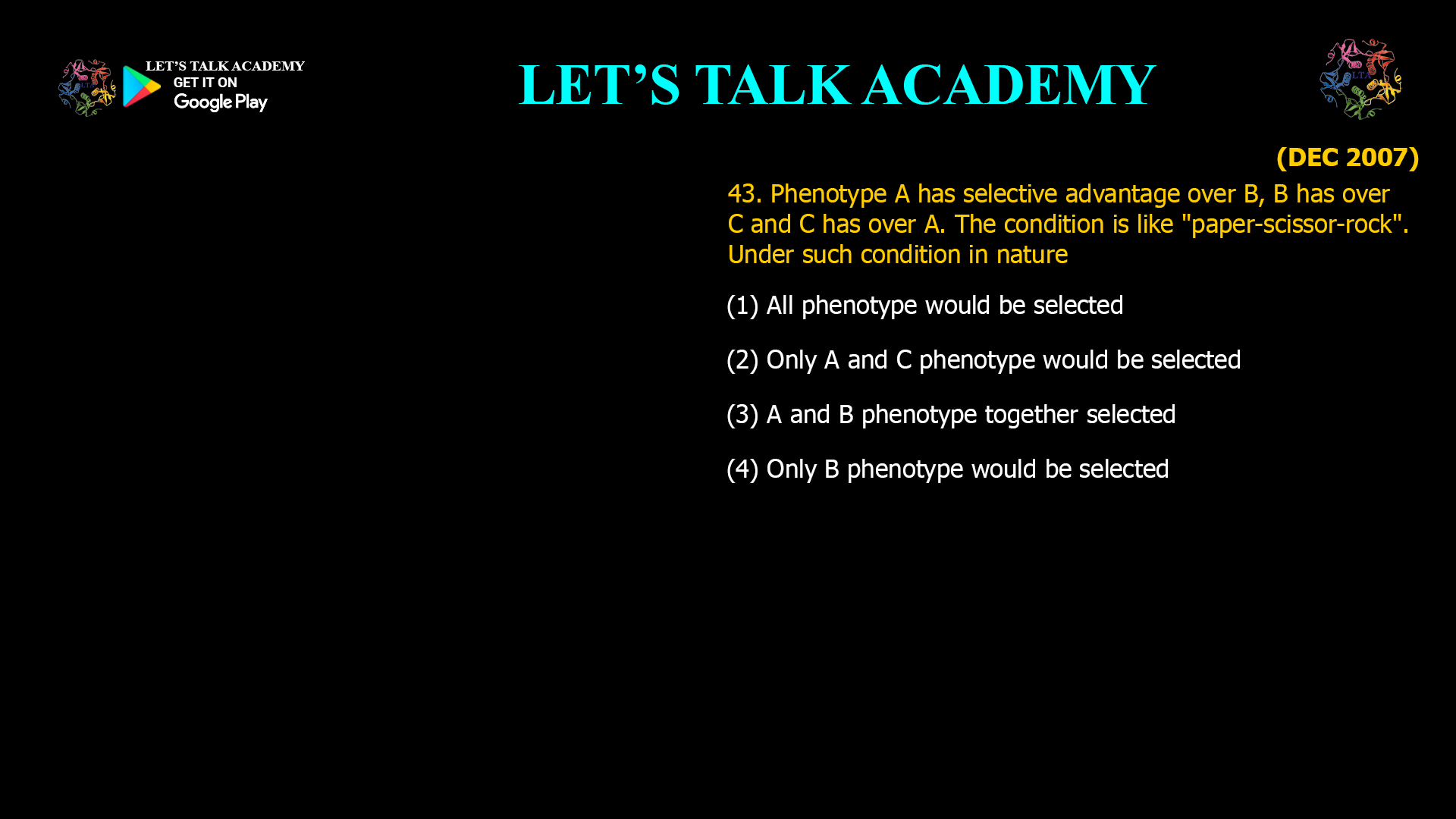- Phenotype A has selective advantage over B, B has over C and C has over A. The condition is like “paper-scissor-rock”. Under such condition in nature
(1) All phenotype would be selected
(2) Only A and C phenotype would be selected
(3) A and B phenotype together selected
(4) Only B phenotype would be selected
Correct answer:
(1) All phenotype would be selected
Introduction
Nature often surprises us with its complexity and balance. One of the most fascinating mechanisms maintaining diversity in populations is cyclic selection, where the advantage of each phenotype depends on the presence and frequency of others. This dynamic is famously illustrated by the “rock-paper-scissors” relationship among competing traits.
What Is Cyclic Selection?
Cyclic selection, also known as frequency-dependent selection, occurs when the fitness of a phenotype is not fixed but changes according to how common or rare it is in the population. In the classic “rock-paper-scissors” scenario:
-
A beats B
-
B beats C
-
C beats A
This creates a cycle where no single phenotype can dominate permanently, leading to the ongoing coexistence of all forms.
Real-World Examples
-
Side-blotched Lizards: In some lizard populations, males come in three throat colors, each with a unique mating strategy. Each strategy is successful against one and vulnerable to another, creating a cycle that maintains all three morphs in the population.
-
Ladybird Beetles: Different color morphs are favored in different seasons or environmental conditions, with their frequencies cycling over time.
-
Mimetic Butterflies: Multiple mimicry patterns persist because the advantage of each depends on the frequency of others in the population.
Evolutionary Significance
Cyclic selection is crucial for maintaining polymorphism—the presence of multiple genetic forms within a population. This diversity enhances the adaptability and resilience of populations to changing environments and ecological interactions.
How Does It Work?
-
When one phenotype becomes common, it is targeted or outcompeted by another, causing its frequency to decline.
-
As its frequency drops, the phenotype it beats becomes more common, only to be outcompeted by the third phenotype.
-
This continuous cycle ensures that all phenotypes are maintained and none are permanently lost.
Conclusion
The “rock-paper-scissors” dynamic in nature is a powerful example of cyclic selection, where all phenotypes are preserved through ever-shifting selective advantages. This mechanism highlights the intricate balance of evolutionary forces that sustain biodiversity in the natural world.
SEO-Friendly Slugs:
-
cyclic-selection-rock-paper-scissors-phenotype-diversity
-
frequency-dependent-selection-maintains-polymorphism
-
evolutionary-cycles-nature-genetic-diversity
-
rock-paper-scissors-selection-biodiversity
-
cyclic-selection-examples-in-nature
Cyclic selection demonstrates that, in evolution, sometimes the best way to win is to keep the game going for everyone.




1 Comment
Manisha choudhary
October 3, 2025Cyclic selection
All phenotype would be selected